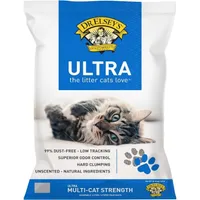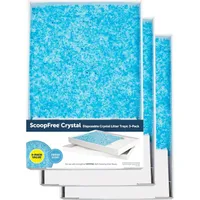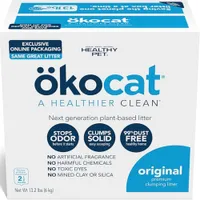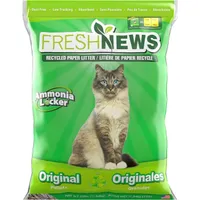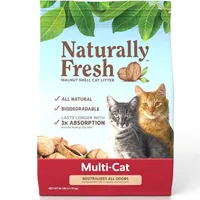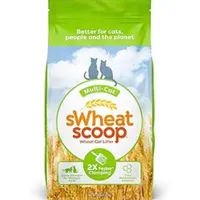Types of cat litter explained: Which one is right for your feline?
We give you the pros and cons of the seven most common types of cat litter to help make your cat's bathroom breaks more pleasurable for both of you
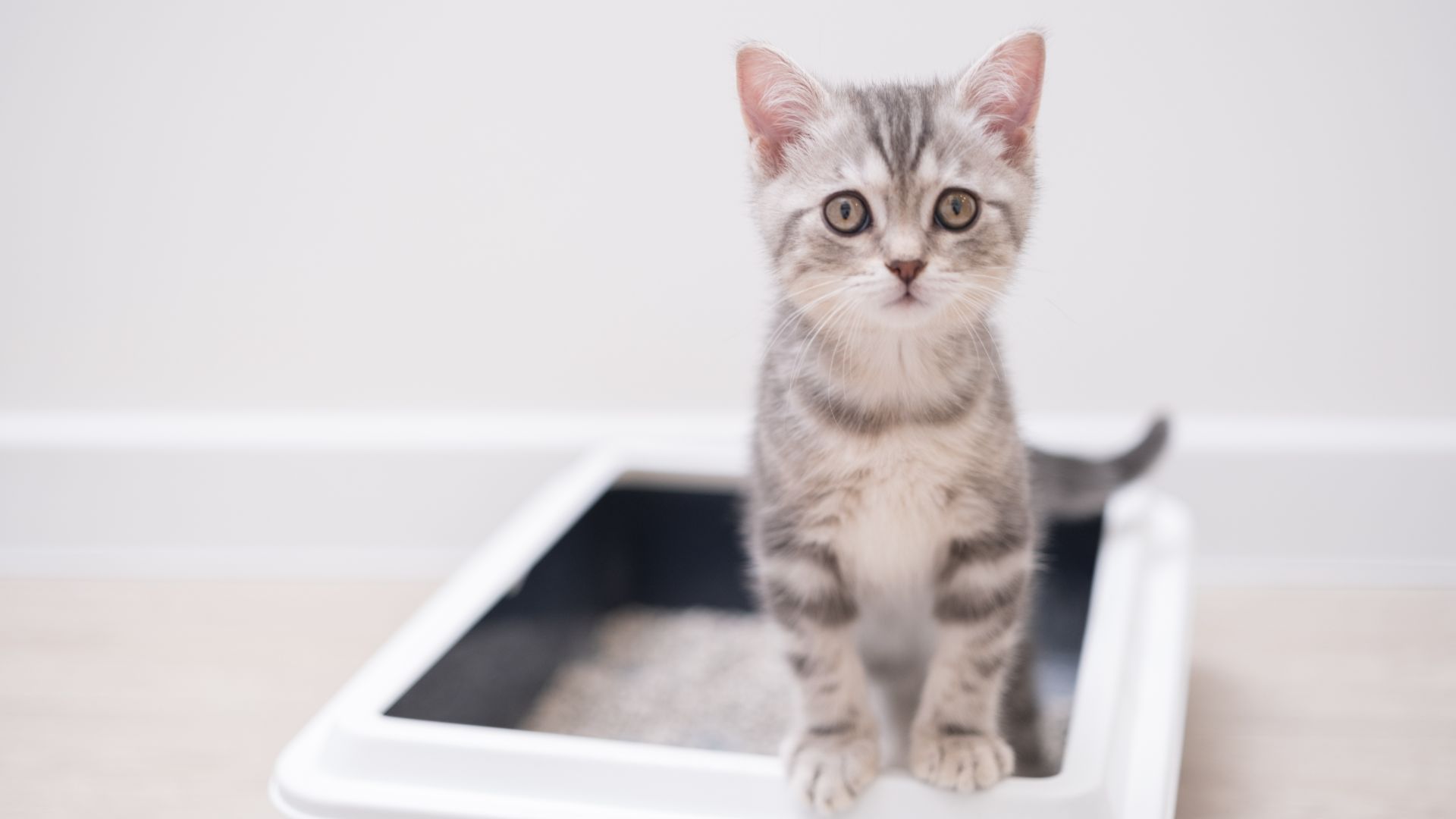
You’d think that choosing from amongst the various types of cat litter on the market would be fairly straightforward, right? After all, how many kinds of cat litter can there possibly be? Well, as it turns out, quite a lot!
The first battles for pet parents can be how to get a cat to use a litter box and how often to clean litter boxes, but once these hurdles are overcome, it’s time to choose a type of cat litter to suit your kitty.
While many brands claim to have the best cat litter, selecting the right one for your feline friend and your household is a little more complicated than simply purchasing the first bag you come across.
Not only do you have to decide between clumping and non-clumping litters and whether you want to opt for a scented or unscented variety, but you also need to consider the material you want your cat’s litter to be made from.
Some types of cat litter, like silica, are perfect if you have one of the best automatic cat litter boxes, while others, such as wood, are ideal if you’re looking for flushable cat litter and an eco-friendly option. But while all of this may sound overwhelming, we’re here to help make choosing between the various types of cat litter an absolute breeze.
So, whether you’ve been wondering how to keep cat litter off the floor and are looking for a low-tracking option to help you do just that, or you have allergies and are after a low-dust formula, you’ll find everything you need to know right here.
Clumping vs. non-clumping
One of the biggest decisions facing you as a pet parent when selecting litter is whether to go with a clumping or non-clumping formula. While clumping litter tends to be the more popular choice, both have their advantages.
Get the best advice, tips and top tech for your beloved Pets
Non-clumping cat litter is the cat litter that started it all and there's a good reason for that. This kind of litter is good at removing odors because it can absorb large amounts of urine, which can help keep your home smelling sweeter for longer. It also requires less daily maintenance, comes in more material choices, and is cheaper.
But, there are downsides to non-clumping litter, mainly the fact that it doesn’t, well, clump! This can make cleaning your cat’s litter box a lot harder and locating their waste amongst all the litter can also be tricky, meaning you often have to throw the whole lot away, which is a real waste.
Then there’s clumping litter, which has become a real pet parent favorite and is it any wonder when it makes keeping your cat’s litter tray clean such a piece of cake? Because the litter forms nice solid clumps wherever there’s urine, it can be easy to identify your cat’s waste and scoop it out, allowing the litter box to stay clean and fresh.
Clumping litter doesn’t come up entirely smelling of roses however. It’s more expensive than its non-clumping counterpart and dust and tracking tends to be a lot higher, so it may not be the best choice if you suffer from allergies or like to keep a very clean home.
Scented vs. unscented
Once you’ve decided on whether you want to go with a clumping or non-clumping litter, the next debate awaiting your attention is the one concerning scented vs. unscented litter.
While you may be tempted to go by what you prefer, scent, or the lack thereof, may also play a part in your cat’s willingness to use their litter box, so that’s worth considering.
As you’ve probably guessed, unscented cat litter is made without any additional scent agents. While you’ll still get the smell of whatever it’s made out of (clay, wood etc.), you won’t get any artificial fragrances.
Scented cat litter contains perfumes to help mask the smell of urine and feces. You’ll find a wide selection available, including scents like lavender, pine fresh, and spring breeze.
In fact, small animal vet Dr Rebecca MacMillan warns against scented litter entirely. “I recommend that all pet owners avoid scented cat litter,” she says. “While the product may smell nice to us, our feline friends have much more sensitive noses. This means scented litter can be overwhelming, and even unpleasant for them. Instead of choosing scented litter, you can keep odors at bay by ensuring that your cat’s litter tray is regularly cleaned out.”
If you do decide to opt for a scented cat litter, monitor your cat to make sure they’re okay with the fragrance you’ve chosen. It’s worth noting that cats don’t tend to like citrus or floral scents, so steer clear of those.
Which type of cat litter should I choose?
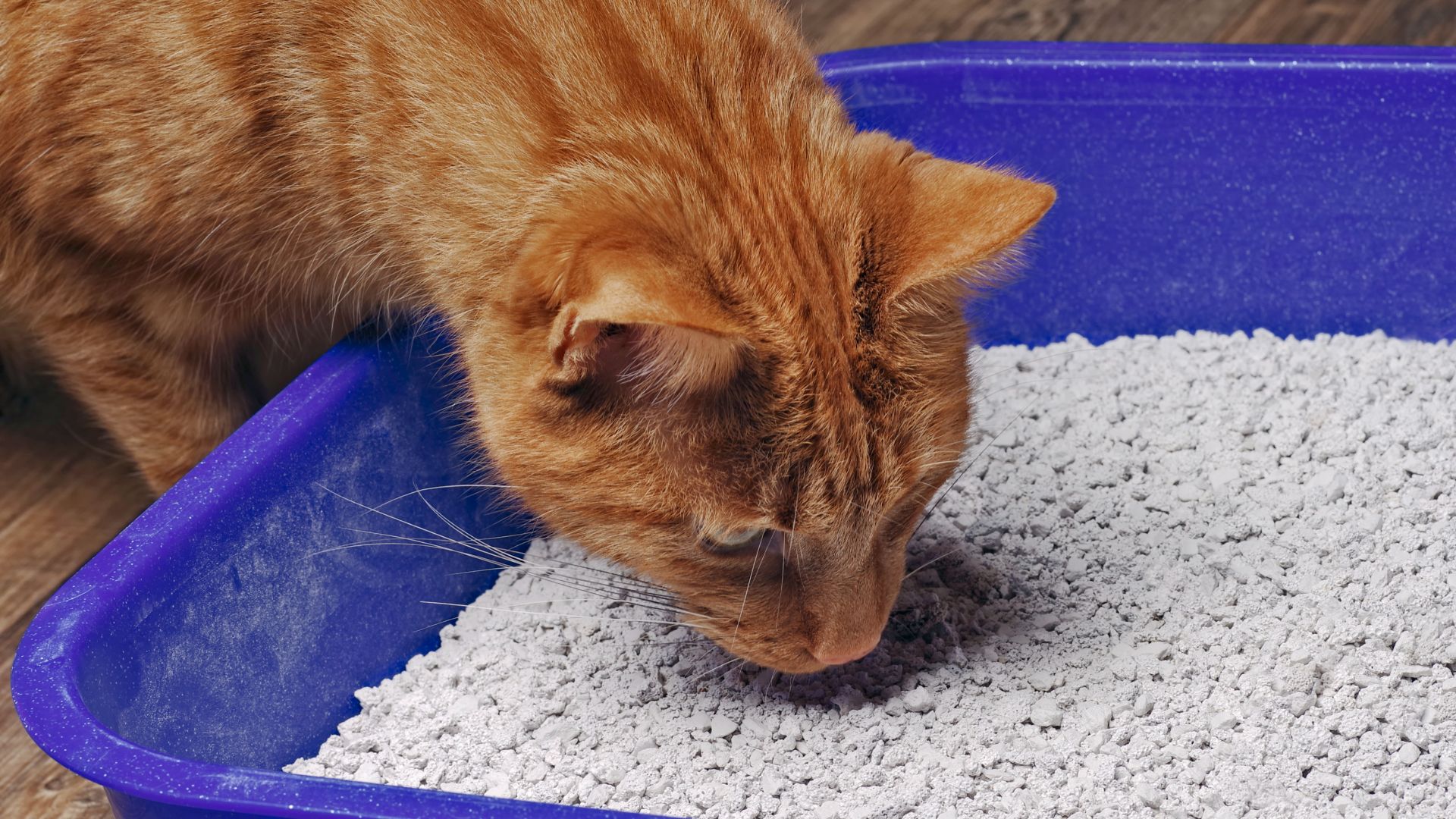
Now that you know a little bit more about clumping vs. non-clumping and scented vs. unscented litters, let's take a closer look at the types of litter materials you can expect to find lining the shelves.
1. Clay
When it comes to the most popular type of cat litter, clay continues to scoop the gold medal with pet parents loving the sheer variety of options available, including low and no-dust formulas and scented and unscented options.
“Clay litter has several advantages over other litter types,” advises Dr MacMillan. “It is highly absorbent and forms clumps when soiled, which can make spot cleaning much easier. Many cats like the texture of clay litter, which is similar to soil or sand. This means that it is kind to their paws and easy to dig around in.
“Clay litter is also affordable and readily available, making it a very easy choice for most owners.”
On the flipside, she adds: “There are some disadvantages of clay litter, however. It is quite heavy making large bags quite tricky to transport and handle for some owners, when compared to other lightweight options. It is also prone to tracking across the house – the small pieces can easily get dragged or kicked out of the tray.
“Some clay litters can also create dust when used which can cause respiratory issues, however, many modern clay litters are now dust-free so always check the packaging. The clumping agents in clay could be harmful if your pet ingests the litter in large quantities.” If you notice your feline friend treating their litter tray like a snack bar, it’s best to learn how to stop your kitten eating litter and take action.
”Also, you should bear in mind that clay is not biodegradable unlike some other litters available on the market, making it a less environmentally friendly option than other more modern litter types.”
Dr. Elsey's Cat Litter | Amazon
This clay litter is low dust, hard clumping for ease of scooping and low tracking, so it shouldn’t get trodden through your home.
2. Silica
Gel crystals made from silica are another popular choice for the sheer fact that they’re so highly absorbable, trapping urine in the crystals so you don’t have to scoop out the litter.
“Silica cat litter is very long-lasting and easy to clean out,” explains Dr MacMillan. “This type of cat litter is extremely absorbent, drawing liquid into the small silica beads, as well as trapping unpleasant odors.”
This litter type is virtually trackless, too. “Silica cat litter is lightweight which can make handling and storage easier than some other cat litter, such as clay,” Dr MacMillan adds.
So, are there any downsides to this type of cat litter? “Silica is more expensive than some other cat litter types, but this needs to be weighed up against its long-lasting nature, so it may end up cost-neutral,” says Dr MacMillan.
“However, one of the main disadvantages is that silica can feel uncomfortable underfoot, so some cats don’t enjoy having it in their litter tray. Another disadvantage is that it is not biodegradable, so it is not an eco-friendly choice.”
PetSafe ScoopFree Crystal Cat Litter | Amazon
These disposable trays make for quick litter tray cleaning. Each odor-eliminating tray can last up to 30 days and is available in scented and unscented varieties.
3. Wood
Wood litter (usually made from pine) is a more environmentally friendly choice than the likes of clay, which is why more pet parents are starting to prefer it. “This product is made from natural ingredients, meaning it is degradable and can be composted,” says Dr MacMillan. “Some types are even flushable. Wood litter usually comes in pelleted form, which is light and easy to store.”
It’s good news for allergy sufferers, too. “Wood pellets are dust-free and highly absorbent making them a great cat litter choice. They are also very good at helping to control odor.“
One of the downsides of pellets is there aren’t any clumping options. “Wood pellets don’t clump, but instead, they crumble into sawdust when soiled,” explains Dr MacMillan. “So, they may not be quite as easy to spot clean as some other litter choices. Wood pellets can be a bit more expensive than other litter types and may not last as long which can be a disadvantage for many cat owners.”
ökocat Natural Wood Cat Litter | Amazon
This plant-based, clumping litter controls odors and is ultra-absorbent, and is 99% dust-free
4. Paper
If you’re looking for creative cat litter alternatives you can find around the home, it’s hard to beat paper, which is both affordable and plentiful. And of course, if you’re not feeling in the DIY spirit, you can also buy commercial paper pellet cat litters.
Like wood, paper is environmentally friendly because it is made from a sustainable source, and is biodegradable. “Paper litter is a great hypoallergenic choice because it is dust-free,” adds Dr MacMillan. “Paper litter is also very lightweight, making handling and storage easy. It’s usually sold in pelleted form, which makes it low-tracking. Paper pellets won’t get stuck to your cat's paws or end up being trailed around the house.”
Some paper pellets can feel a little uncomfortable for your pet to walk on, so the texture may not be suitable for all cats. “Paper-based litter is non-clumping so it can be trickier to clean soiled material out of the tray,” continues Dr MacMillan. “Its odor control ability is not great compared to other types of cat litter and you can’t use it in automatic/self-cleaning litter tray.”
Generally, paper litter is non-flushable, which you may want to bear in mind.
Fresh News Recycled Paper Cat Litter | Amazon
Non-toxic and made from recycled paper, this cat litter is biodegradable, non-clumping, 99% dust-free and non-allergenic.
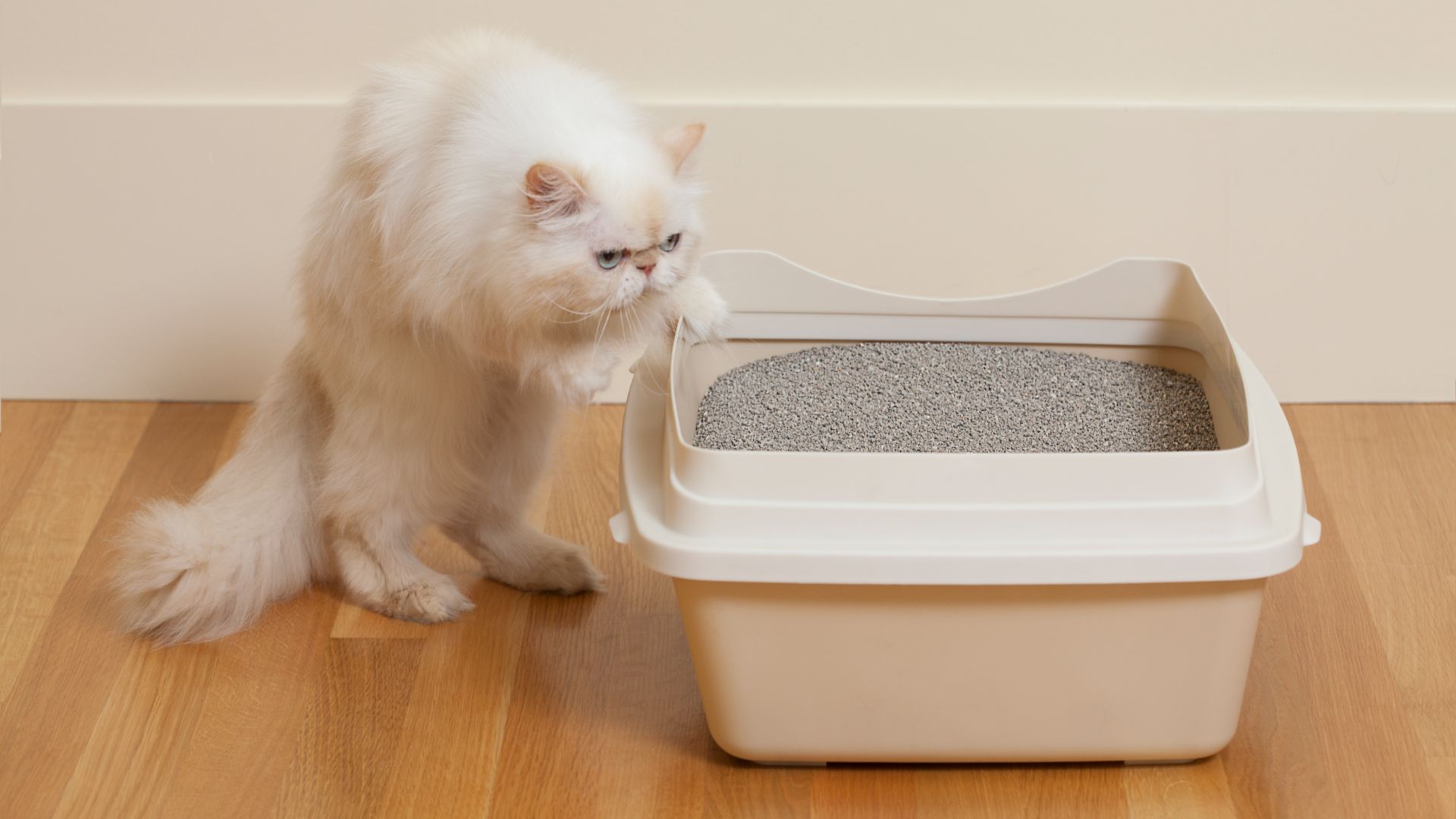
5. Walnut
Highly absorbent litter made from walnut shells is a great natural litter. “Walnut shells are a renewable resource, so walnut litter is an excellent eco-friendly product,” says Dr MacMillan. “This natural material is biodegradable so it can be composted, and many are flushable too, depending on your local regulations.
“It can be purchased in pelleted form or a finer texture, similar to clay,” she continues. “Many walnut cat litters naturally clump, making litter box cleaning easier. Walnut is also reasonable at odor neutralizing and is usually low in dust, which makes it a good option for cats and owners with respiratory issues. This product is lightweight so it makes handling and storage easier.”
The main disadvantage of walnut cat litter is that it can be more expensive and not as widely available as other cat litter types. What’s more, you may want to test out a few different brands. Some give off a small amount of red or brown dust, which you may not like if your cat is prone to making a mess. “In its finer form, it can also track more easily around the house than some other cat litter,” Dr MacMillan adds. “It has been reported that walnut is not as absorbent when compared to other types of cat litter, like clay. Its naturally dark brown color may also make spotting soiled areas trickier for some owners.”
Naturally Fresh Walnut Shell Cat Litter | Amazon
Super-absorbent and clumping, this litter is biodegradable, non toxic and virtually dust free.
6. Corn
Available in natural and scented varieties, corn is a good option if you’re looking for both a clumping and biodegradable litter all rolled into one. “Corn litter, also known as corn cob cat litter, is made from compressed dried corn,” explains Dr MacMillan. “This makes it another natural cat litter, giving it better eco-friendly credentials than clay or silica.
“It is a lightweight material making handling and storage easier than clay. Corn litter is usually low in dust, as well as being a safe and non-toxic material.”
The main disadvantage of corn litter is that it can spoil in warm and humid conditions. “This litter can go moldy and as such there are some concerns about aflatoxins,” warns Dr MacMillan. “Aflatoxins are toxic substances produced by certain mold types that can grow on corn crops. This is only a problem if your cat ingests their litter, however.
“Corn cat litter may be a bit more expensive than clay, and it only has average odor control. Some cat owners also report that the litter itself has a distinctive smell, which is not always appealing.”
World’s Best Cat Litter | Amazon
This flushable, unscented corn-based cat litter is septic-safe and 99% dust-free. It's ultra absorbent and low tracking.
7. Wheat
Wheat litter is made from whole wheat grain or wheat byproducts, such as husk or bran. “The starch found naturally in wheat makes it clump when soiled,” explains Dr MacMillan. “It is also low in dust and soft on your cats’ paws. Wheat litter is a natural product, made from a renewable resource, so it ticks the box on being eco-friendly. It weighs less than clay litter so is easy to handle.”
However, like corn, wheat is a food crop, and can spoil in warm and humid conditions. “Corn needs to be stored correctly and soiled litter needs to be removed from litter trays regularly,” advises Dr MacMillan. “Owners find that it is not as absorbent as clay or silica litter and may not control odors as well. Fine wheat litter will also be tracked around the house. If your cat tends to eat their cat litter and has a wheat allergy, then you should avoid this type.”
Read next about pregnant women and cat litter or can dogs use cat litter?
sWheat Scoop Natural Wheat Cat Litter | Amazon
This unscented, wheat-based litter has enzyme odor control and contains no added chemicals. It's 99.5% dust-free and is made with farm-grown renewable resources.

Dr MacMillan is a companion animal vet who has always had a passion for writing and client communication. She works in the South West and loves complex medical cases.

Bethany is an experienced writer who has been writing across the pets and equestrian sector for eight years.

Kathryn is a freelance writer who has been a member of the PetsRadar family since it launched in 2020. Highly experienced in her field, she's driven by a desire to provide pet parents with accurate, timely, and informative content that enables them to provide their fur friends with everything they need to thrive.
Kathryn works closely with vets and trainers to ensure all articles offer the most up-to-date information across a range of pet-related fields, from insights into health and behavior issues to tips on products and training.
When she’s not busy crafting the perfect sentence for her features, buying guides and news pieces, she can be found hanging out with her family (which includes one super sassy cat and a kitten), drinking copious amounts of Jasmine tea and reading all the books.
She has written for a range of publications, including Fit&Well, Top Ten Reviews, LiveScience, Goodto, and Product Hunt.
- Bethany StoneFreelance Writer
- Dr. Rebecca MacMillanVet
